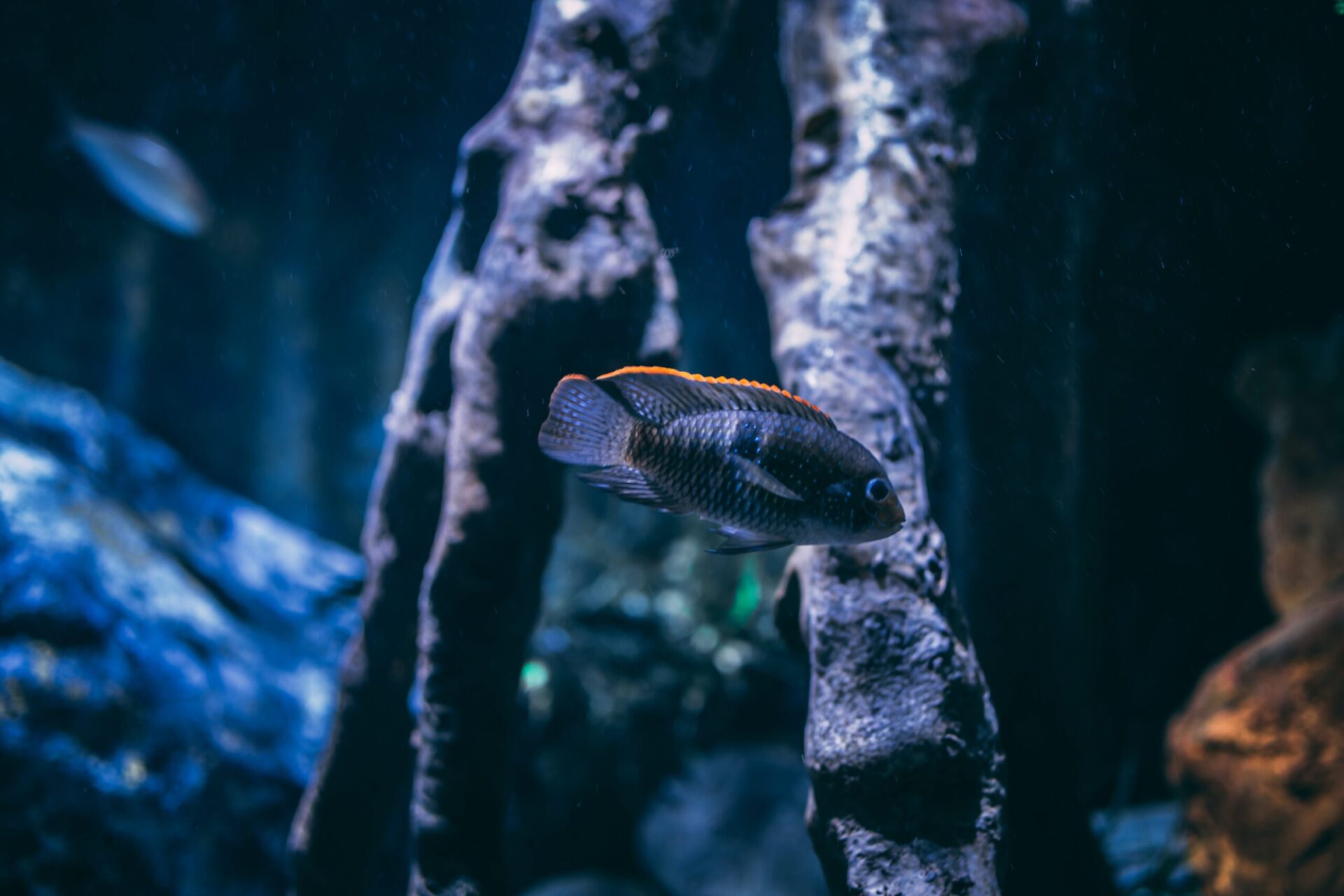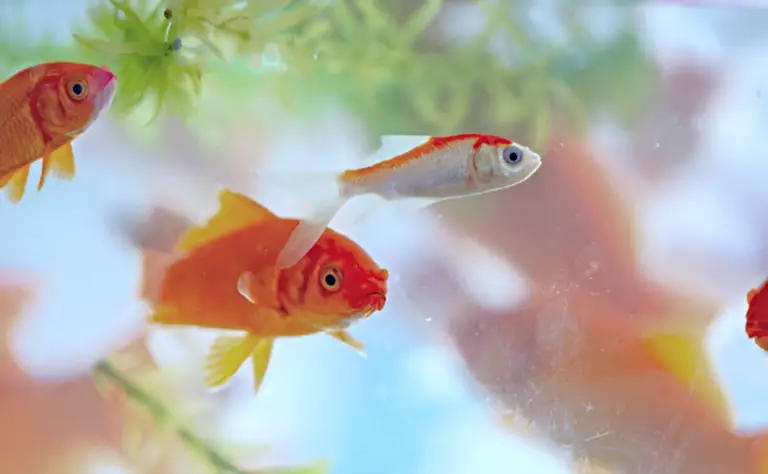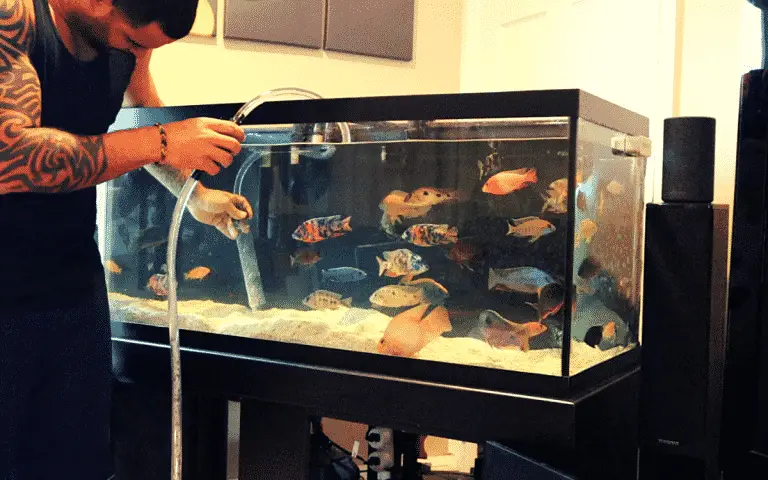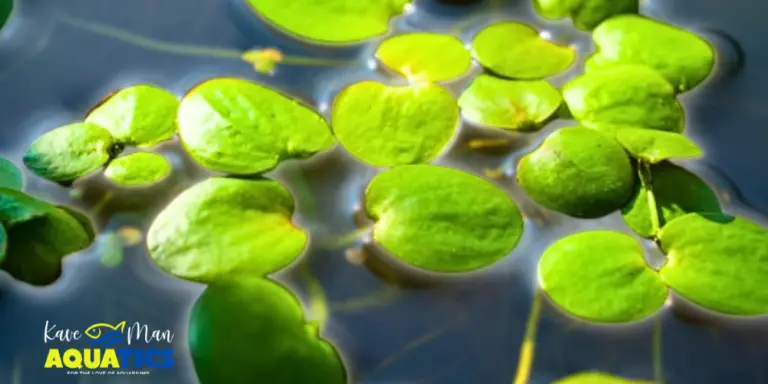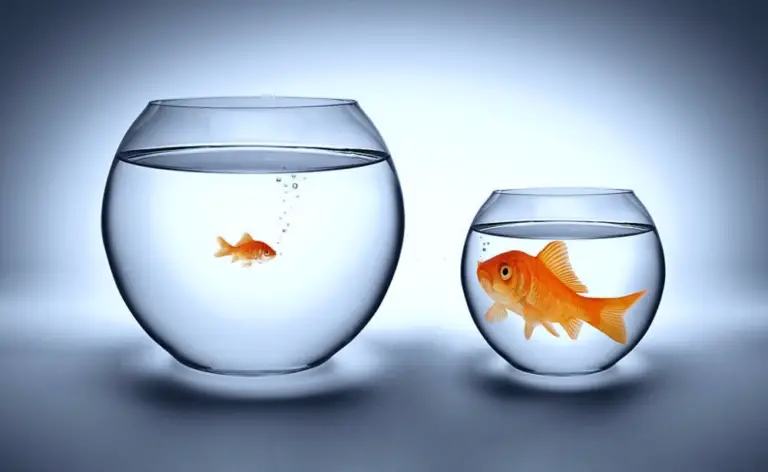How To Quarantine Fish – Your Questions Answered (A Simple Guide)
One of the most critical, yet often overlooked, elements of fishkeeping is quarantining fish. It’s important to know the what, why, and how of quarantining your fish before adding them into your main tank. There are also a few must-have supplies you need to set up a quarantine tank. Let’s get started!
What does it mean to quarantine fish?
For the newcomers, let’s start off with what it means to quarantine a fish. Simply explained, you remove a fish from your main fish tank and place it in a quarantine tank by itself. Your quarantine tank should be completely separate from your main tank.
Why should I quarantine fish?
There are a few reasons why you should quarantine your fish. The most common circumstance is that you wish to quarantine a new fish before introducing them into the main tank. Why? Some fish may harbor diseases. You don’t want their diseases to enter your main tank.
Other fish might experience a lot of stress during transit. Stress weakens a fish’s immune system and makes them more susceptible to catching a disease. Adding a new stressed-out fish into your main tank will only increase their stress levels due to the new environment and the other fish in the main tank – some fish are bullies!
Quarantining a fish not only keeps diseases from spreading but also makes your new friend a little more comfortable with its new home.
How long do you quarantine fish?
It’s recommended that you quarantine your fish for a month. Yes, a month! Some diseases take time and your fish might not show any signs of a disease within a few days, but a month is perfect for you to monitor your fish’s behavior.
Now, we all are excited to add a new member to the fish family and see them swimming with the rest of the tank. So for those who are a bit impatient, 2 weeks is the bare minimum that a fish should be quarantined. However, please know that you might be risking your new fish and the main tank’s health and wellbeing by doing so.
Setting up a quarantine tank
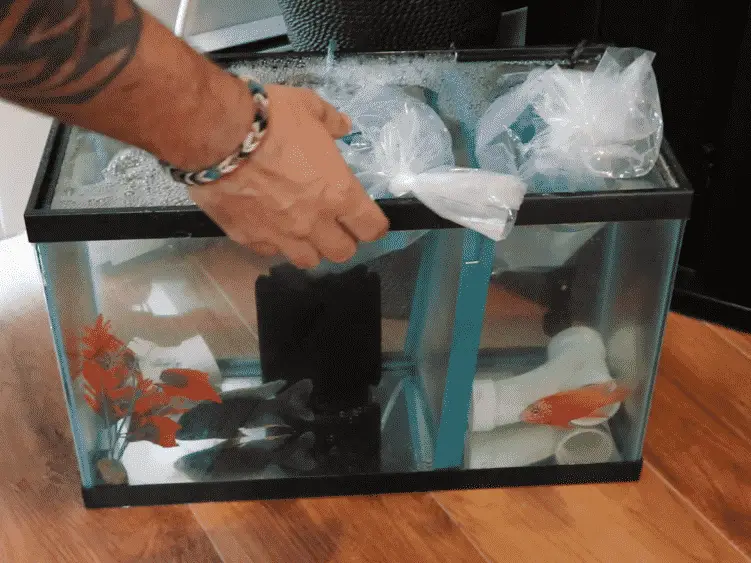
Setting up a quarantine tank is simple, thus you’re not obligated to have a running quarantine tank 24/7. Whenever a fish needs to be quarantined, you can just set up the tank as the need arises. Here’s how you do it:
First, ensure that you have these must-have quarantine tank supplies separate from your main tank:
- 10-gallon tank (depending on the size of the fish)
- Sponge filter
- Air pump
- Heater (depending on the type of fish and your location)
Second, set up your quarantine tank – simple!
But what about cycling? Assuming your main tank is happy and healthy, you can use any media from your main tank, such as a sponge filter, and set it up in your quarantine tank – cycling done!
If that’s not an option, fill your quarantine tank with water and dose the water with Seachem’s Prime and Stability products every day until the tank is cycled or until the fish is healthier. Here’s a great video with more details on how to use this method.
Quarantine medication
Believe it or not, medication can also cause stress to a fish! We here at KaveMan Aquatics don’t want to cause a new fish any more stress by immediately medicating them. Rather monitor the new fish for any external signs of diseases, parasites, fungi, etc.
Keep an eye on the fish’s swimming and feeding behavior – their behavior can say a lot about how the fish is feeling. Just keep in mind that a new fish’s behavior might not seem normal as they’re still rattled up from the transit.
If you don’t notice any signs or symptoms of diseases or parasites, let the fish run through its month of quarantine before adding them into the main tank. After a few days, if you do notice any abnormal behavior or signs of a disease or parasite, it’s time to medicate.
A staple medication to have on hand is Seachem’s ParaGuard. This product can treat a broad spectrum of bacterial, fungal, and parasitic diseases. It’s a light medication so your new fish won’t stress out as much as other stronger medications. Note that ParaGuard only treats your fish externally.
For internal treatment, we recommend stopping the ParaGuard treatment and starting Seachem’s MetroPlex treatment. This medication targets protozoan parasites and bacterial diseases. For a more detailed explanation of diagnosing and treating internal parasites in fish, watch the video below or read an article here.
Conclusion
Quarantining fish might be a time-consuming process but it’s definitely worth it in the end. Introducing a new fish can be stressful for you, the new fish, and your existing fish, so quarantining ensures that everyone is happy and healthy.

